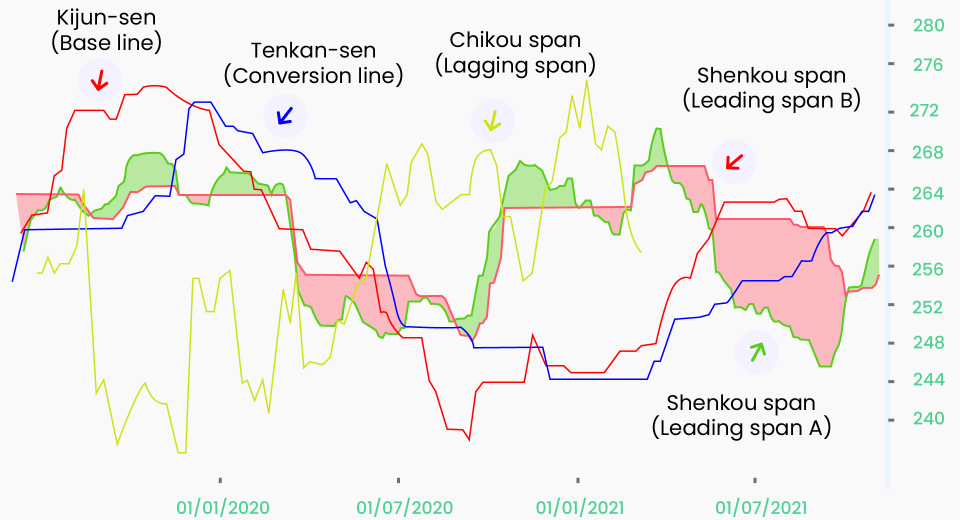How to Hedge Exposure to the British Pound

The Great British Pound (GBP) has had a difficult year in 2022. With seemingly uncontrollable inflation, a looming recession and three prime ministers in almost as many months, the GBP/USD was alarmingly close to parity at the end of September. The continuing Russia-Ukraine war and the continued COVID-19 restrictions in China have led to supply chain disruptions that have only fuelled the price of almost every commodity, including food.
Analysts believe that things might look up for the British pound in 2023. However, there could be further volatility in store for forex pairs that include the GBP. Against this backdrop, forex traders could benefit from putting robust risk management measures in place. One such measure is hedging forex positions.
Did you know
Although the GBP fell to its lowest level against the US dollar since 1985 at the end of September 2022, the GBP/USD pair has never reached parity.
What is Hedging in Forex Trading?
Hedging is a trading strategy where you open additional positions to balance or offset risks associated with current positions. So, traders could open positions in different forex pairs or choose to diversify across financial instruments to hedge their exposure to the British pound. Here’s a look at some of the most popular hedging strategies in forex trading.
Simple Hedging Strategy
The simplest way to hedge an existing position in forex trading is to take an opposite position on the same currency pair. This essentially means holding both a long and short position in the same pair, such as the GBP/USD or GBP/EUR. For instance, if you open a buy position for a standard lot of the GBP/EUR, you also open a sell position of the same size in the GBP/EUR. This is also known as a direct hedge. But while it eliminates the risk of losses, it also cancels out any potential profits.
However, remember that direct hedging of the same currency pair is not permitted in the US. Also, not every broker in the EU, Australia or Asia offers hedging capabilities. Therefore, it is useful to learn about the features and functionalities permitted on the trading platform in the region in which you will be placing your trades.
Multi-Currency Hedging Strategy
Also known as correlation hedging, here you choose two currency pairs that share a positive correlation and then take opposite positions. For instance, the GBP/USD shares a fairly strong positive correlation with the EUR/USD. This means that both pairs tend to move in tandem. To implement the correlation strategy, you could choose to take a long position on the GBP/USD if your analysis signals a potential uptrend. To hedge this position, you could then take a short position, of the same size, on the EUR/USD.
Multi-currency or correlation hedging holds an advantage over direct hedging. When you open opposite positions in the same forex pair, the potential losses and profits are both cancelled out. But if the correlation strategy works, you not only get to use an effective risk management measure, but you might also earn a profit on at least one pair. On the other hand, if it doesn’t work out as expected, you could make a loss in both positions.
Top Tip
It is important to note that such multi-currency hedging comes with its own set of risks. In the above example, you are opening yourself up to a short position on the euro to hedge your long exposure to the British pound. Therefore, doing your research on both forex pairs is crucial.
How to Hedge in Forex Trading
To make the most of hedging in forex trading, it is important to first learn all you can about the market and what moves it. If you are a beginner trader, here are some crucial steps to follow:
Step #1: Choose the currency pair you wish to trade. If you are looking for exposure to the GBP, several pairs include the British currency. Do your research to choose the pair that suits your trading experience and style the best. Remember that major pairs tend to see more volatility but also enjoy higher liquidity than minor or exotic pairs.
Step #2: Decide how much capital you want to invest in a single trade. If you’re trading with leveraged products, such as CFDs, choose the leverage ratio wisely. Remember that experts always say to put in only the amount of money you can afford to lose into a trade.
Step #3: Test your hedging strategies on a demo account before implementing them in the live markets. With a demo account, you get to experience real market conditions without needing to put in any real money.
Top Tip
A rule of thumb in trading that many experienced traders follow is to only use 2% of the capital in your trading account on a single position. This helps limit the level of losses you could experience if your strategy fails.
The Pros and Cons of Hedging
While hedging is an effective risk management strategy for forex trading, it comes with its own set of advantages and drawbacks, just like any trading strategy. Some of the major benefits include:
- Protects against sudden price swings: A decline in the inflation rate in the US or an increase in the interest rate by the Federal Reserve could weaken the GBP/USD. Hedging can protect you against losses in the event of such unpredictable price swings by preserving the overall value of your trading account.
- Helps diversify your portfolio: Diversifying your trades is one of the most effective risk management measures in the financial markets. This way, no single event or variable can decimate your account.
- Better control over risk/reward: This is achieved by counterbalancing one position with another position in the opposite direction.
However, as mentioned earlier, there also are some disadvantages that you should keep in mind, such as:
- You could still incur losses: This is especially possible in correlated hedges, since correlations are never perfect. So, there is no guarantee that one position will gain if the other loses.
- Profit potential might be reduced: While hedging is a great way to reduce risks, it also tends to nullify profits, especially in the direct method.
Hedging in forex trading requires experience and skill. Continue to enhance your market knowledge and familiarity with your chosen financial instrument to create effective strategies and time them well to hedge your positions.
To Sum Up
- Hedging is an effective strategy to offset risks associated with current positions.
- There are two basic types of strategies – simple (direct hedging) and multi-currency (correlation hedging).
- In the simple strategy, you open both a long and short position of the same size in the same currency pair.
- In the correlation strategy, you open an opposite position of the same size in a currency pair that shares a strong positive correlation with the primary forex pair you wish to trade.
- There are pros and cons of hedging. It is important to familiarise yourself with the forex market and your chosen currencies before using any risk management strategy.
Disclaimer:
All data, information and materials are published and provided “as is” solely for informational purposes only, and is not intended nor should be considered, in any way, as investment advice, recommendations, and/or suggestions for performing any actions with financial instruments. The information and opinions presented do not take into account any particular individual’s investment objectives, financial situation or needs, and hence does not constitute as an advice or a recommendation with respect to any investment product. All investors should seek advice from certified financial advisors based on their unique situation before making any investment decisions in accordance to their personal risk appetite. Blackwell Global endeavours to ensure that the information provided is complete and correct, but make no representation as to the actuality, accuracy or completeness of the information. Information, data and opinions may change without notice and Blackwell Global is not obliged to update on the changes. The opinions and views expressed are solely those of the authors and analysts and do not necessarily represent that of Blackwell Global or its management, shareholders, and affiliates. Any projections or views of the market provided may not prove to be accurate. Past performance is not necessarily an indicative of future performance. Blackwell Global assumes no liability for any loss arising directly or indirectly from use of or reliance on such information herein contained. Reproduction of this information, in whole or in part, is not permitted.




